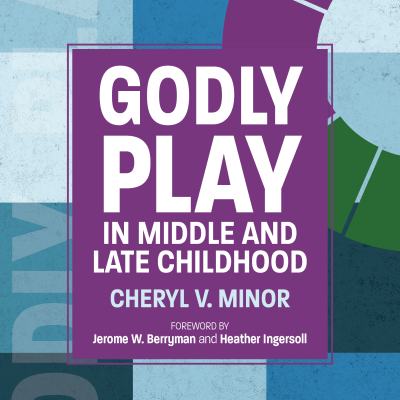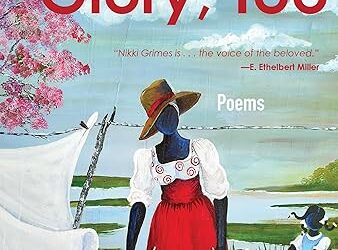Cheryl Minor
Like many of you, I am in a special place with my work; processing the lessons I’ve learned through the pandemic, altering what faith formation looks like based upon those lessons, tinkering with favorite methods, and testing out new ways of going forth with an eye on the next three to five years. My congregation hit another transition this summer when we needed to change our worship time to when we have held our faith formation and I am staring down some seriously big decisions. The new time doesn’t work at all, engagement is way down because of physical and virtual set-ups, and people are frustrated. When Godly Play In Middle and Late Childhood by Cheryl Minor landed on my desk from the publisher, I eagerly dived in with an eye on how to use this to revamp our traditional Sunday School hour. It was definitely a nudge from the Holy Spirit, reassuring me that hey, Elizabeth, you can pivot again and do it successfully.
This resource is helpfully organized to help those that are newer to Godly Play and reads like an old friend, patting your hand and guiding you to what you need if you are already versed in the methodology. The chapters are organized to acquaint the reader with the participants in the classroom community, the methodology, and how to use it with middle and late childhood learners. My favorite part of the resource are the six (6!) appendices, which really got my brain thinking about how I could use elements of Godly Play in a multi-age, even multigenerational, setting, pulling the pieces together cohesively to provide fluid, age-flexible, self-guided learning experiences to help augment short instructional, story-driven sessions that happen asynchronously. The sample schedules and spiral curriculum pages are extraordinarily helpful, and the annotated bibliography of suggested classroom print materials stellar (but I can’t help adding more of my own, including a new shelf dedicated to relevant biographies and historical fiction written for this age group.
My family gets glazed-over looks on their faces when I start discussing the fascinating pedagogical tidbits that come across my inbox . They are much more engaged when I ask them about what activities they prefer, how they prefer to spend their time, and what we could do to make their education more relevant and interesting. When I started pulling out some revamped Godly Play boxes for them to test-drive for me, we had a bunch of fun together sussing out what their favorites were, why they were well-liked, and how we could bring them to the next level. Their feedback, coupled with the suggestions in this resource have breathed new life into our faith formation. I am going to be rolling these new boxes out weekly, bringing options to a disjointed faith formation hour that will help ground and revitalize the learners in the pursuit of answers to their own wonderings about the deep and rich stories of our faith. This book is geared towards middle and late childhood learners, but truth be told, it is for all ages. This is an excellent resource for those working with multi generational groupings. It would take very little extra effort to set the space for all, leveling the boxes with a few open-ended questions to guide wondering, and stacking the shelves with print resources for all readers. I also would not shy away from introducing these wonderings and the work of Godly Play through playlists and letting people explore through resources on the internet. Yes, it is different that what has originally been done in Godly Play, but times have changed and solid models of pedagogy are living, breathing methods that allow for growth and response. Could you stick with the plans as laid out? Absolutely. The author methodology is thorough and engaging. This will hit the desires of these ages to be nurtured and challenged in supportive environments. Do you need this resource? Yes, yes you do if you are looking for something that is tried and true, but nimble enough to be breathed into today’s context with relevance and engagement.





0 Comments